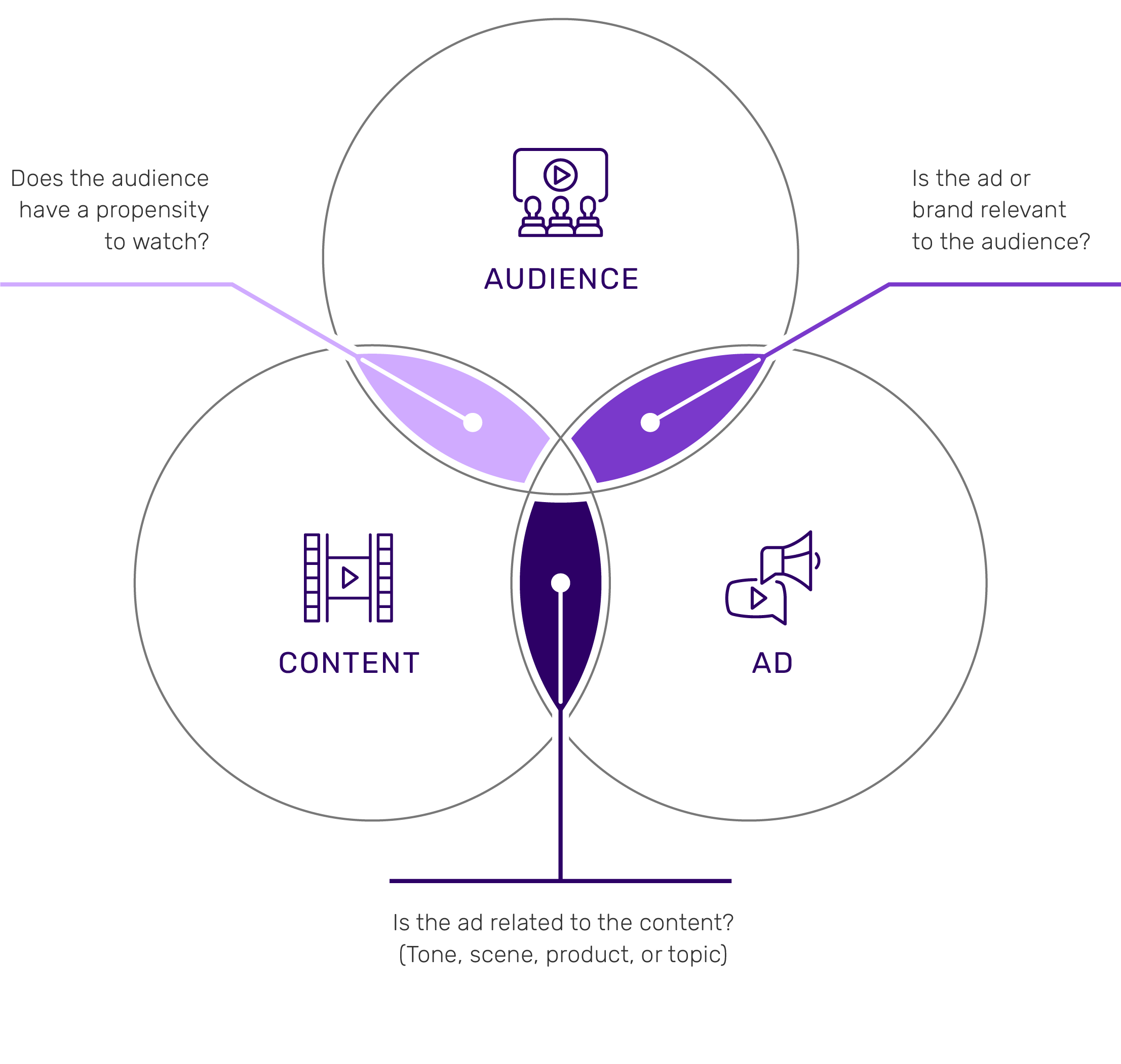Successful advertising has always been about delivering the right message to the right audience at the right moment. Traditionally, marketers have relied on demographics and viewer attitudes to guide their strategies. But in today’s streaming-first world, we’re seeing a shift — not just in how people watch, but in how brands connect with them.
Imagine watching a cooking show on a streaming platform and seeing an ad for a new kitchen appliance right before the host whips up a gourmet meal. Or tuning into a suspenseful crime drama and getting served a trailer for a thriller movie. These aren’t coincidences — they’re examples of contextual advertising in action.
As streaming continues to grow, so does the ability to deliver highly targeted ads at scale. Yet, with growing uncertainty around identity signals and privacy regulations, advertisers are looking for smarter, privacy-safe ways to ensure ad relevance. That’s where contextual advertising shines — by aligning elements of the ad creative with the program content viewers are already engaged in, it boosts relevance, resonance, and results.
The benefits of relevant advertising
Previous research from FreeWheel’s Viewer Experience Lab explored the importance of tailored ad experiences, finding that viewers are twice as engaged and brand recall is twice as high when ads are relevant. The report, Making the Ad Experience More Relevant, provided an overview of three types of relevancy in advertising. Two types capture audience behavior, the personal relevance of both the content and the ad to the audience. The third type is defined by the relevance of the ad to the content in which it aired. Program content provides the context in which the audience experiences an ad.

As part of the Viewer Experience Lab’s mission to help the industry understand how to create a great viewing experience for audiences, the latest report Maximizing Brand Recall Through Contextual Alignment dives deeper into the value of contextual advertising by exploring the impact on brand results when the program content and ad content are contextually aligned.
What is contextual alignment?
Contextual alignment refers to the similarity between program and ad content. Among the different ways of defining similarity, identifying keywords which describe shared creative content – the similarity in locations, actions, objects and characters in the program and the ad – is a simple way of representing content similarity. In this research, programs and ads which share at least one keyword among the group of top keywords qualify as contextually aligned. Sharing one out of one, or an exact match on the top keyword, is the narrowest definition of contextual alignment, while sharing one out of the top two keywords or one of the top three keywords provides broader, more flexible criteria for alignment.
To find the keywords which best describe program and ad content, Comcast Technology Solutions’ VideoAI tool analyzed the video, audio, text and metadata of 200+ programs and over 5,000 ads and labeled each video with the most relevant keywords from the IAB Content Taxonomy 3.0. From their panel of in-home viewers, Mediaprobe previously collected data on audience engagement, via a physiological measure of electrodermal activation, and ad effectiveness, measured as brand recall, on these programs and ads. Combining contextual alignment with ad effectiveness and audience engagement provided new insight on the effect of alignment on viewers’ memory for brands.
Contextual alignment drives brand recall
Contextual alignment for content and ads delivers a significant increase in brand recall across all three definitions of alignment. The broadest definition, matching one out of three keywords, produced a brand lift of 20%. Sharing one of the top two keywords created a recall lift of 30%. In programs and ads with the same top keyword – that is, an exact keyword match – the increase in brand recall for aligned ads was 38%. Although the lift in brand recall increased as the definition of contextual alignment narrows, the narrowest definition is also likely to restrict the content inventory available to match to an ad. This potentially limits the chance for brands to capitalize on the benefit of contextual alignment.
Audience engagement did not change the relationship between contextual alignment and ad effectiveness. Dividing the data into programs with higher engagement and lower engagement, both groups show increased recall (+17% and +23%, respectively) when programs and ads are contextually aligned at the broadest level. Even content with lower audience engagement, which might not be considered “must-see,” benefits advertisers when ads are contextually aligned.
How advertisers and publishers can unlock the power of contextual alignment
The alignment of content and ads unlocks benefits for publishers and brands alike; offering a powerful solution for advertisers who want to connect with audiences through relevant experiences and helping publishers increase the value of their inventory. To enable its use and adoption, publishers should consider using a standard taxonomy – like the IAB Content Taxonomy – to align on keywords to provide repeatability and ease of transaction. When automated, this can make contextual advertising a seamless targeting solution and increases the value of the content to advertisers. Buyers should look to contextual advertising as an effective targeting solution that leads to greater brand recall and seek out partners that provide these capabilities.
FreeWheel’s Contextual Marketplace was built to simplify the process of serving contextually relevant ads for both advertisers and publishers, enabling buyers to increase the value of their advertising even when identity signals are unavailable, and helping to automate and scale new monetization opportunities across content owners’ premium inventory.
To discover the full findings, download the FreeWheel Viewer Experience Lab’s latest report: Maximizing Brand Recall Through Contextual Alignment.



